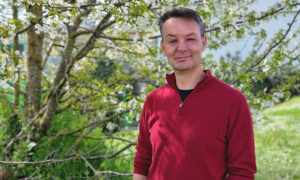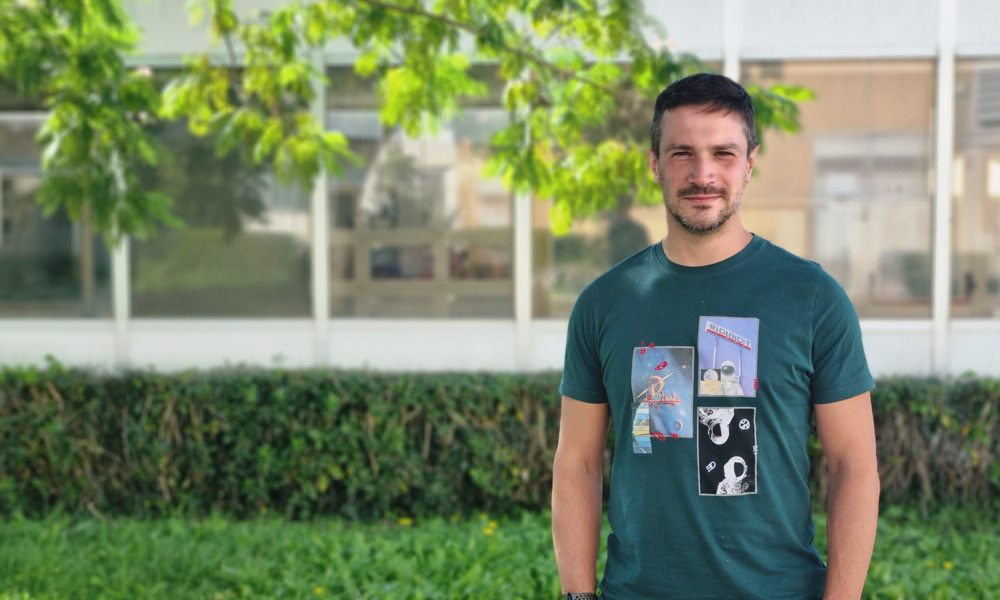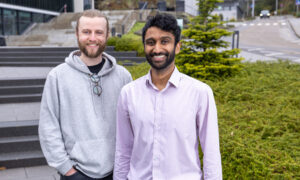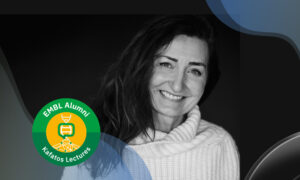
We are EMBL: Daniele Ancora on improving microscopes and his ‘obsession’ with fixing things
ARISE fellow Daniele Ancora works in the Light Imaging Facility at EMBL Rome to develop algorithms for optimising image-based omics technologies

Besides performing fundamental research and providing scientific services to support research in its member states, EMBL is renowned for its training programs aimed at scientists at all levels. To meet the need for interdisciplinary training, promote technology development, and provide technical skills needed to run research infrastructures, in 2020, EMBL launched the ARISE programme aimed at scientists from different backgrounds and at different career stages.
Daniele Ancora joined the ARISE programme to gain a new set of management skills and insight on how a research facility works, but at the same time to continue to work on a research project. As a member of the Light Imaging Facility at EMBL Rome, he develops new algorithms for image processing.
How did you become interested in the life sciences?
I have a background in theoretical physics, specifically in optics in disordered media. In these media – such as opaque glass – light does not pass in a straight line, and photons are deflected randomly. When I started my PhD at the FORTH foundation in Crete, these optical media started to be employed as microscope lenses. Therefore, I started to apply my knowledge to microscopy, using theoretical models – such as the autocorrelation principle – to develop algorithms for image analysis.
What is the focus of your project at EMBL?
At EMBL Rome, I work in the Light Imaging Facility, and my project focuses on developing an algorithm to assist image-based omics technologies. The basic concept of omics technologies is to have many different fluorophores in order to identify as many genes as possible at the same time. However, signals from different fluorophores may interfere and give unreliable results. My aim is to develop an algorithm which is able to discriminate between different signals in the post-acquisition phase, with very high sensitivity.
This approach is aimed at facilitating the work of the researchers, who can acquire the images without worrying about calibrating the fluorescent emission of the sample in the pre-acquisition phase each time.
Tell me about one of your most recent achievements at EMBL.
As soon as I arrived at EMBL, we started a collaboration with the Vicidomini group at the Italian Institute of Technology (IIT). They had developed an add-on module for microscopes based on a SPAD array. The array works like multiple confocal microscopes simultaneously looking at the sample, strongly increasing light collection efficiency. The reconstruction of the images generated with the SPAD array requires post-acquisition processing to be improved.
At the Light Imaging Facility at EMBL Rome, we developed an algorithm to analyse the images taken by this microscope module. We developed a pipeline using the theoretical model of autocorrelation to improve the image resolution, which reaches a level of definition that is higher than what can be achieved by state of the art methods.
Our work has been recently published in the Journal of Physics: Photonics, which invited me to contribute with a manuscript in the Emerging Leaders 2024 collection.
What’s the best part of working at EMBL?
As an ARISE fellow, I can benefit from many training opportunities offered by the programme. The ARISE fellows have different backgrounds and are assigned to both research groups and facilities, so the path is very different for each of us. But we have common sessions to interact with each other and exchange experiences. We also receive a specific training in facility management that is unique to this programme and very helpful for shaping our future careers.
The training opportunities include interdisciplinary experiences where you can visit other groups or facilities at EMBL. I decided to take advantage of the ongoing TREC expedition and visited the Advanced Mobile Laboratory and the fleet of EMBL’s mobile services during the TREC stop in Athens.
It was really interesting to see how different facilities are integrated and coordinated in the Advanced Mobile Lab, and how efficient their on-site service is. I was also impressed by the logistic organisation and the ability of the TREC team to sort and ship samples in real time to complete the analyses at partner institutes. This was an amazing field experience that I could not have had otherwise.
What is your favourite part of your job?
Without a doubt, it’s the intellectual stimulation and the opportunity to contribute to groundbreaking research. Science is never boring; there is always something new to learn and even more to discover. We should never forget this, especially when the rush of events may leave us stuck in a million (sometimes desperate) thoughts. I guess this is part of the game; navigating unknown waters is risky, but the reward is so exciting when it comes!
At what age did you decide you wanted to work in science, and what triggered that?
I guess it has been quite clear since I was a child. The real question back then was what kind of scientist I wanted to become. At the age of eight, my hobby was collecting plant leaves and cataloguing them in a book. Then, I switched to dinosaurs and fossils, and finally to astronomy. At the end of high school, I decided to become a clinical engineer, but right before starting university, I changed my mind and enrolled in physics.
What is one thing about you that most folks don’t know?
I love fixing things, disassembling stuff, and seeing them from the inside. I enjoy the whole process, from guessing how it works to reassembling it; the satisfaction of seeing something work again cannot be expressed in simple words. It’s a kind of obsession that applies to everything around me. Even if I walk by and notice something broken, I try to fix it on the fly, if possible. It’s my grandfather’s genes. He was a genius who could create whatever he had in mind; I have just tried to follow him as much as possible.


